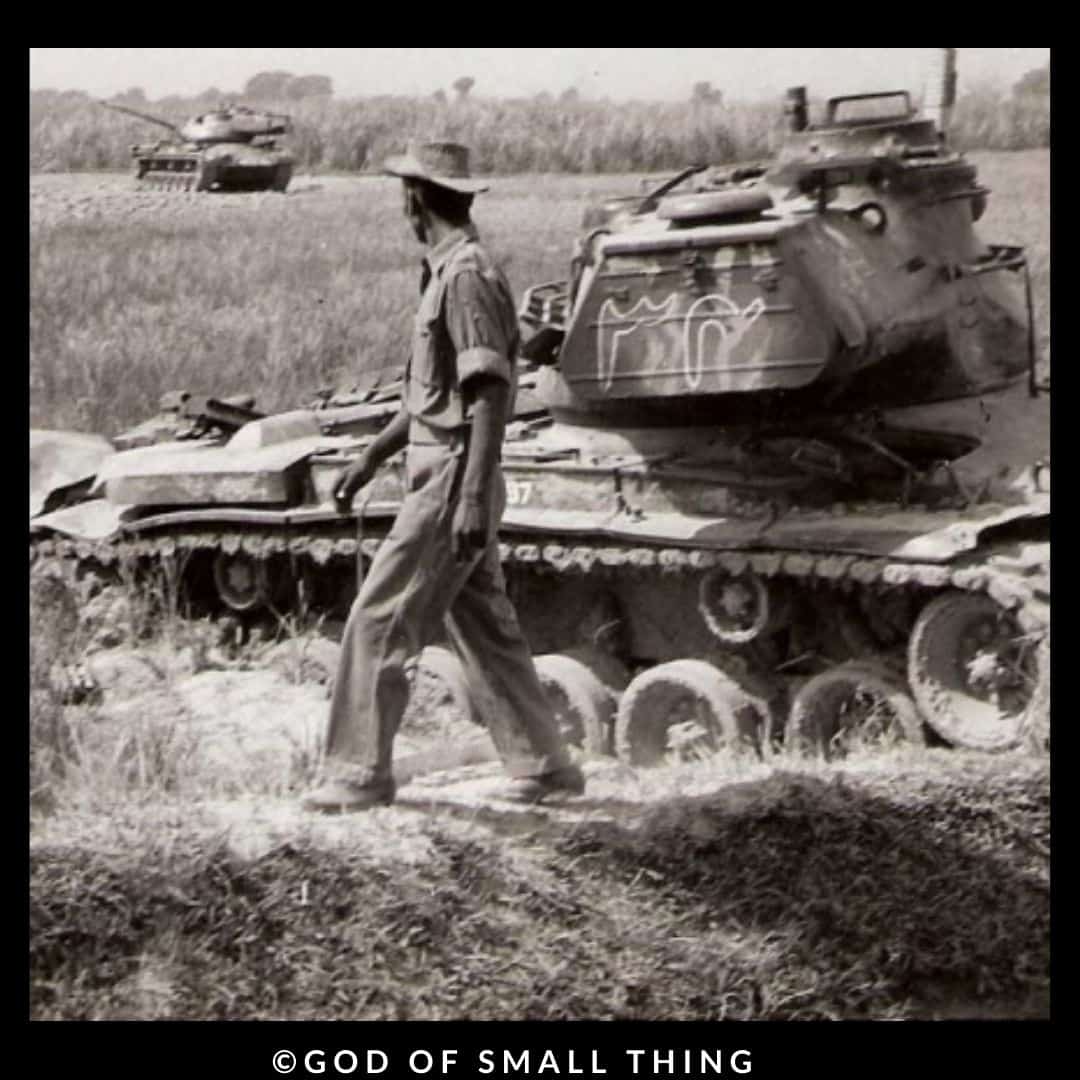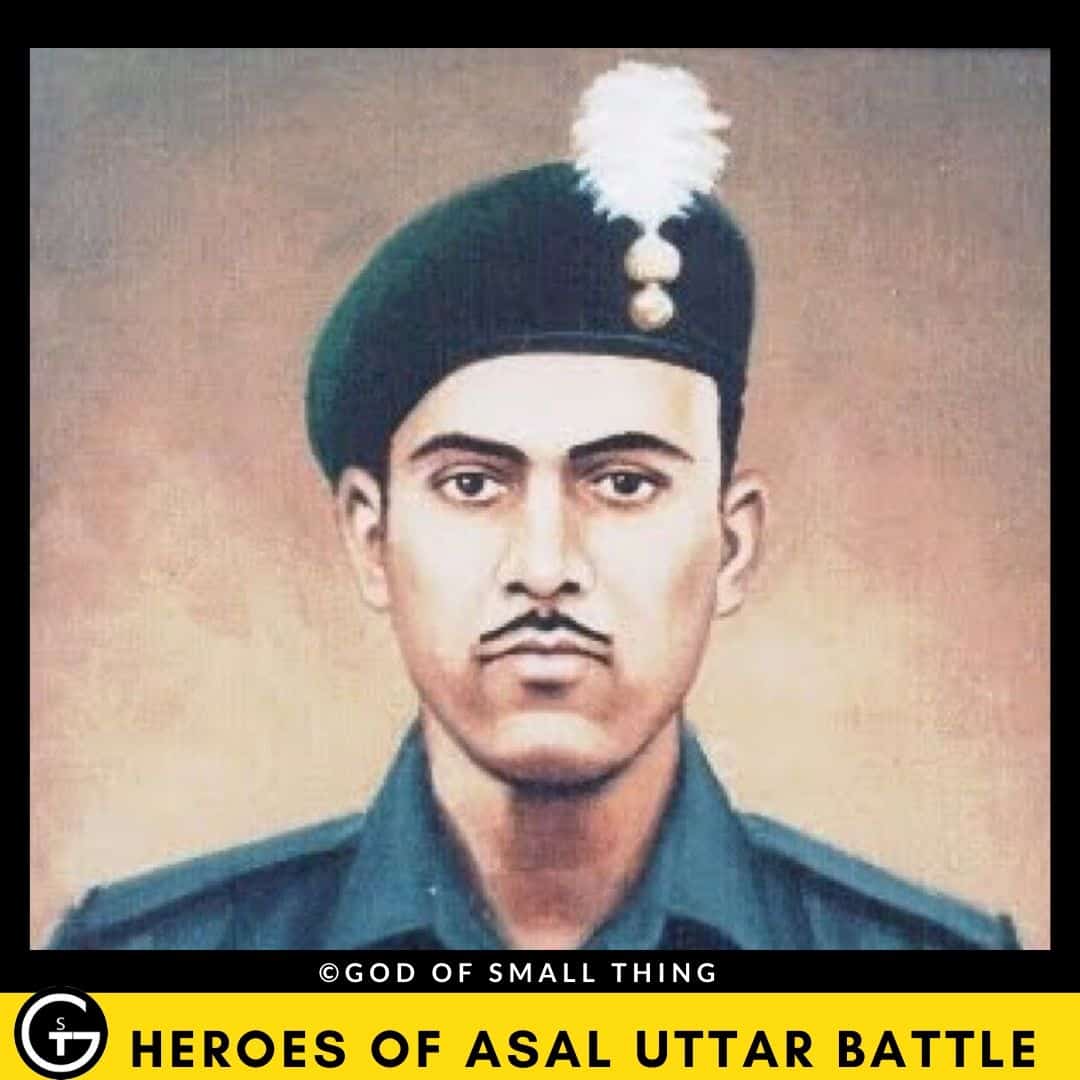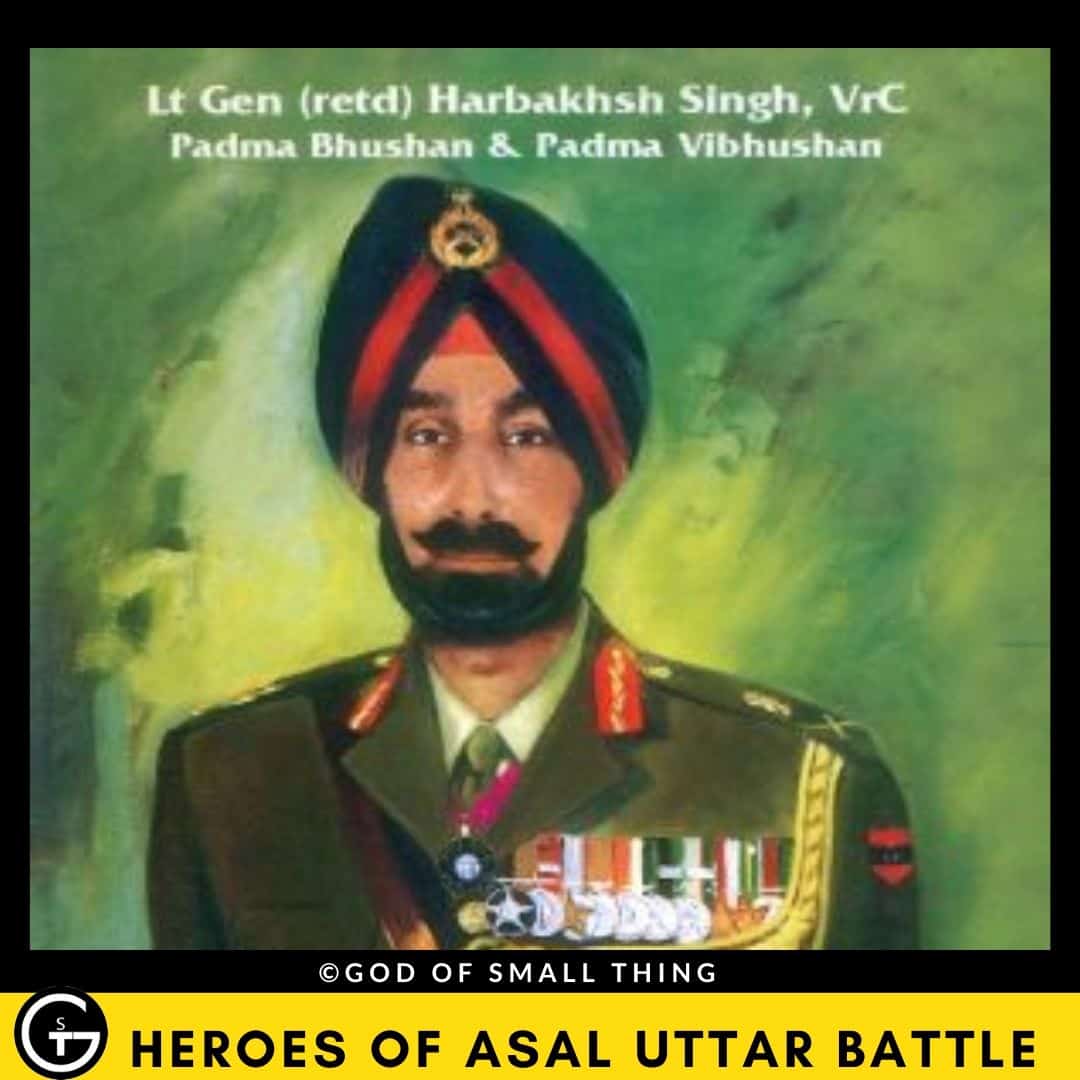largest tank battles: Battle of Asal Uttar Indo-Pak War of 1965
The Battle of Asal Uttar is one of the largest tank battles in world history. When it took place in 1965, it was the largest tank battle since WWII. One of the major Indian Army Heroic Battles, the Battle of Asal Uttar was part of the historic Indo-Pak war of 1965. Writer Rachna Bisht Rawat presented an account of the Asal Uttar tank battle in her book ‘1965: Stories from the Second Indo-Pak war’.
Table of contents
Battle of Asal Uttar: The Beginning
One of the greatest Indian Army Heroic Battles, the Battle of Asal Uttar took place from 8th to 10th September 1965. On 7 September, Indian troops took defensive positions. They laid minefields and flooded a few areas. They also used sugarcane stalks from the nearby field to cover the trenches.

The troops quickly practiced drills. They were aware of the confusion that might arise in identifying the enemy’s tanks. Therefore, before firing at the tanks they had to be 100% sure that those belonged to the enemy. This meant that the soldiers were to fire at the enemy from a very close range. Also, the Indian troops had arranged the tanks in a horseshoe-shaped defensive position. This way the tanks maintained a distance of 500 meters from each other.
The in-depth details of Battle
From 8th to 10th September, the troops engaged in a rigorous battle with the enemy. Initially, the enemy tanks found it difficult to locate the Indian troops. The tall sugarcane fields had hidden them well. Hence, Pak tanks engaged in the long-range firing. Also, the defenses laid out the previous night and the swampy grounds posed hurdles for them. The failure to perform reconnaissance was the reason for their unfamiliarity with the terrain.
Indian troops, on the other hand, followed what had been told to them. They waited until they were certain of the enemy tanks. They patiently prepared, with their vintage recoilless rifles, to fight Pak’s Patton tanks. And then finally, the first enemy tank exploded. Similarly, other enemy tanks were destroyed too. Some enemy soldiers fled and abandoned their almost brand new tanks when they caught fire after being shot at. Some other soldiers fled the tanks which got stuck in the mud.
We all have been keen to read about heroic wars of the Indian Armed forces post-independence but how many battles do you know that Indians fought even before the Britishers came to India? Here are some Battles that changed Indian History Forever. And each link will open in New Tab so you can finish this off and switch to other 🙂
The Aftermath
The situation was stabilized by 10th September. Pakistan suffered heavier losses as compared to India. India estimated the tank casualties suffered by Pak to be 97 in number, 78 of which were the Patton tanks. One of the major Indian Army Heroic Battles, the Asal Uttar tank battle was one of the largest tank battles in history.
Battle of Asal Uttar (1965) (Background)
Pak’s Offensive
After the failure of Operation Gibraltar, Pak launched the Operation ‘Grand Slam’. It wanted to capture Akhnoor to isolate Indian positions in Naushera, Rajauri, and Punch. Following this, it was to capture Jammu, thus, disconnecting all land communications to the State of J&K. The Indian Air Force’s intervention, however, saved Akhnoor thwarting Pak’s objectives.
The Indian Counter-Offensive
In response to Pak’s Grand Slam, India launched counteroffensives across the IB in J&K, Punjab, and Rajasthan. The Emergency Committee of the cabinet, chaired by PM Lal Bahadur Shastri, gave free hand to the Indian Military during the Indo-Pak war of 1965.
India was to threaten Lahore and Sialkot to ease pressure in the Chhamb- Jaurian sector. India also aimed at damaging Pak’s armed potential and then capturing territory for a bargain during the post-war negotiations. To threaten Lahore, India planned to secure the Ichhogil canal and other bridges. This would help them remove threats to vulnerable areas of Punjab like Amritsar and Beas.
Why did the Indian troops withdraw?
On 6th September, around 600 Indian soldiers set out to cross the Ichhogil canal to capture The Pannu Bridge. In chest-deep water, they held their weapons high up to protect them from the water. The Pak soldiers spotted them and therefore, opened the canal gates flooding the area. Indian troops faced heavy machine-gun fire from the enemy. The bullets, however, landed in the water and were left ineffective. Only 4 jawans were injured and there were no fatal casualties. In a way, the flooding only favored Indian troops.

Even as the Indian troops reached the canal, they found it heavily guarded. Pak had lowered the canal’s bank on the Indian side. On the bank of the canal on their side, Pak troops had constructed cement pillboxes with holes used to keep watch and fire their weapons. The enemy launched artillery shelling on Indian troops throughout the day. The Indian troops could not capture and hold the canal. They also learned that Pak’s 1 Armoured Division was heading towards the Khem Karan sector. The enemy was aiming to capture Harike and Beas Bridge and then move on to capture Amritsar.
Getting ready for the Battle
Indian troops were ordered to withdraw and take up a defensive position in the village of Asal Uttar. From here they were to prevent Pak’s advance to Khem Karan. The troops took the cover of medium machine gun fire and completed a successful withdrawal by the morning of 7 September. They prepared their defenses the same evening and waited for what would later become one of the largest tank battles in history.
Part-2 The War
The Indo- Pak war of 1965 was the second war arising out of the Kashmir conflict. When British India was partitioned in 1947, two separate states were formed. One of these was India and the other was Pakistan. The latter had two non- contiguous regions- West Pakistan and East Pakistan (now Bangladesh).
The tension in Kashmir
The Indian state of Jammu and Kashmir shared borders with West Pakistan. The dominion over the state has been a matter of constant conflict between the two countries. Pakistan attempted to annex the state by force. After the first Indo- Pak war of 1947-48, the UN intervened issuing a ceasefire. Approximately 1/3rd territory of the state of Jammu and Kashmir was in Pakistan’s control.
Later in early, 1965, Pakistan had already begun receiving military aids from the USA which boosted its confidence to launch another war on India. India, on the other hand, had shifted focus against China following the war of 1962. In 1965 again, both the countries saw another clash over the disputed territory.
The Indo-Pak war of 1965

Pakistan launched an offensive on India, seizing Kanjarkot (Rann of Kutch) in February. This started a series of battles between the two countries during the Indo-Pak war of 1965. During March and April, a number of land battles were fought. In July, a ceasefire came into force due to the intervention of PM of the UK. Both sides agreed to restore the conditions as they were on 1 Jan 1965. Pakistan had, however, already been planning Operation Gibraltar which later in August would commence a full-scale war.
After Pak’s operations in the Rann of Kutch, the Indian Army launched Operation Ablaze in May-June. Under this Operation, the Army strengthened its position along the western border in case Pakistan launched another attack across the IB. Following the ceasefire in July, the operation was called off. Consequently, the troops were ordered to return to their peace locations.
In September 1965, Pakistan launched its Operation ‘Grand Slam’ after the failure of ‘Gibraltar’. This led to a series of intense battles between the two countries. One of these, the Asal Uttar battle is, in fact, often compared to the great Battle of Kursk. During the war, India did hesitate to internationalize the conflict. Finally, the war ended with the intervention of the United Nations. UK and USA supported the UN by cutting off arms supplies to both the countries.
At the end of the 1965 war
At the end of the Indo-Pak war of 1965, India had captured around 1,920 sq km while Pakistan had captured 540 sq km of Indian territory. Casualties suffered by both sides were heavy. India lost 2,862 jawans while 8,617 were wounded. As per Indian sources, Pakistan lost 5,800 of its men. According to Pak Defense Ministry, however, they lost 1,033 of their soldiers.
Do you know about the Greatest tank battle in the history of Mankind? It was known as the Battle of Kursk. Here’s everything you need to know about Battle of Kursk
Heroes of Asal Uttar Battle
CQMH Abdul Hamid

Abdul Hamid was a true battle hero in one of the Indian Army Heroic Battles. His story of valor stood in the Battle of Asal Uttar. CQMH (Company Quarter Master Havildar) Abdul Hamid displayed great valor and prudence on the battlefield. At around 8.30 a.m. on 10th September, Indian troops heard the rumble of three enemy tanks. Hamid spotted the first tank from a distance of around 180 meters. He let the tank approach closer and then smashed it moving away quickly to save his location from the enemy’s sight.
Intensified enemy shelling kept challenging Indian troops. Hamid had destroyed 6 enemy tanks when he spotted the 7th tank. The 7th tank also had Hamid in its sight. Realizing the urgency of the moment, Hamid asked his driver and loader to get undercover. He then took the aim of the 7th Patton tank. Both Hamid and the tank fixed their aim at each other. Hamid knew that there was no going back now. Finally, two simultaneous explosions shook the earth.
Hamid’s courage and patriotism gained him immortality in the hearts of the people of India. The brave-hearted son of Mother India was posthumously decorated with the Param Vir Chakra.
Lt. Gen. Harbaksh Singh

In 1964, he took over as the General Officer Commanding- in- Chief (GOC-in-C) of the Western Command. In the Indo-Pak war of 1965, he did not let his troops lose their morale. He made sure the troops firmly held their courage and did not withdraw. Under his leadership, India was able to stabilize the intense battle conditions by 10th September in one of the major Indian Army Heroic Battles. His leadership helped Indian troops dominate one of the largest tank battles in history- the Battle of Asal Uttar.
Major General Gurbaksh Singh

Maj. Gen. Gurbaksh Singh was commanding the mountain division in the Indo-Pak war of 1965. When the capture of the Ichhogil canal failed, the troops had to withdraw. Maj. Gen. Gurbaksh Singh ordered his troops to fall back in a U-shaped formation with Asal Uttar being at their focus. He led his men to successfully dominate the numerically superior enemy and their advanced weaponry.
Throughout the attacks, Maj. Gen. Gurbaksh Singh kept his men motivated by moving among them and directing the battle from the ground. Under his leadership, Indian troops dominated one of the largest tank battles.
Have you heard about an army man protecting the Borders even after death? Here’s Baba Harbhajan Singh: A Man Protecting The Border’s Even After Death!!
FAQs
Why did Patton tanks fail in 1965
In the Battle of Asal Uttar fought during the Indo –Pak war of 1965, Pakistan had an upper hand with the advanced M-47 and M-48 Patton tanks. These tanks had high caliber, increased range guns, and better armor. The Indian troops made use of the M4 Shermans, vintage Centurion, and light AMX-13 tanks. The Pattons outclassed the Indian tanks.
On the night of 9th September, Indian troops flooded the Sugarcane fields. The next morning, the Patton tanks began the armored attack. These heavily weighted tanks started sinking in the swampy fields. The tanks that followed them also could not move ahead. The Indian troops then launched their artillery assault. Many Pak soldiers fled the immobile tanks leaving them for the Indian troops to collect as war trophies later on.
How many Indian tanks took part in Asal Uttar battle?
The Battle of Asal Uttar was one of the largest tank battles in history. Around 140 Indian tanks took part in the Asal Uttar tank battle, one of the major Indian Army Heroic Battles. Among these were the M4 Sherman, A41 Centurions, and AMX-13 tanks.
On the other hand, Pakistan had around 300 M47 Pattons, M-48 Pattons, and M24 Chaffee tanks. Pakistan had technologically more advanced tanks. Their tank outnumbered those of India. Yet their failure to perform a reconnaissance of the area backfired on them. Many of their tanks sank in the swampy grounds. Some others stuck in the sugarcane covered trenches. After the battle of Asal Uttar ended, India won many abandoned brand new tanks as war trophies.
How did Hamid destroy the enemy tanks?
We have previously discussed Abdul Hamid’s heroic display of courage in the Asal Uttar battle. He alone destroyed seven enemy tanks with his recoilless gun. He was a mighty hero who gave the enemy a good taste of defeat. Param Vir Chakra Abdul Hamid laid his life while fighting for the Motherland in the Battle of Asal Uttar.
What was the largest tank battle in history?
The Battle of Asal Uttar was the largest tank battle since the historic Battle of Kursk of WWII. Around 440 tanks from both sides engaged in one of the largest tank battles in history. Pakistani tanks had outnumbered the Indian side. Their tanks were also technologically new and more advance. Despite all these advantages, the enemy stood defeated as Indian troops strategically strengthened their defenses. As the battle came to an end, Pakistan lost around 100 tanks while India lost around 32 tanks. Witnessing the valor and courage of Indian soldiers, this battle became one of the greatest Indian Army Heroic Battles.
The information is verified and checked multiple times from sources like Wikipedia.
Feeling pumped and amazed by the heroic story of Asal Uttar already? What will your reaction be when you read about the historic battle of longewala? Indian Army Heroic Battles: The 1971 Battle Of Longewala


